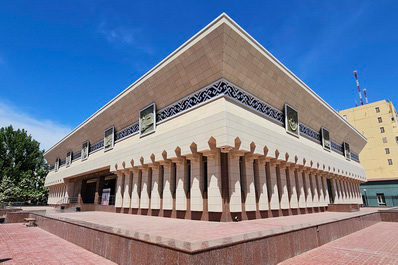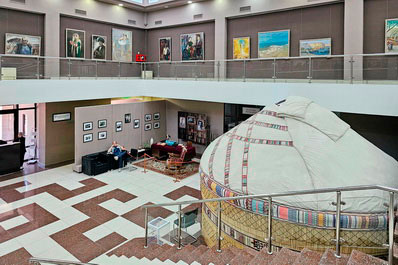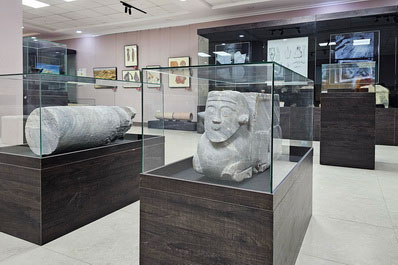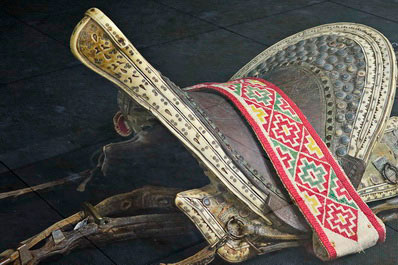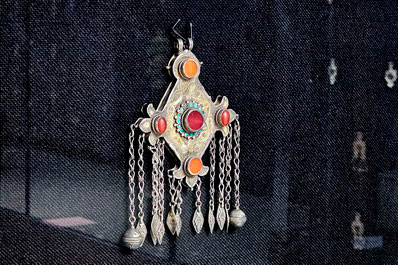The Museum of Local Lore of Karakalpakstan, Nukus
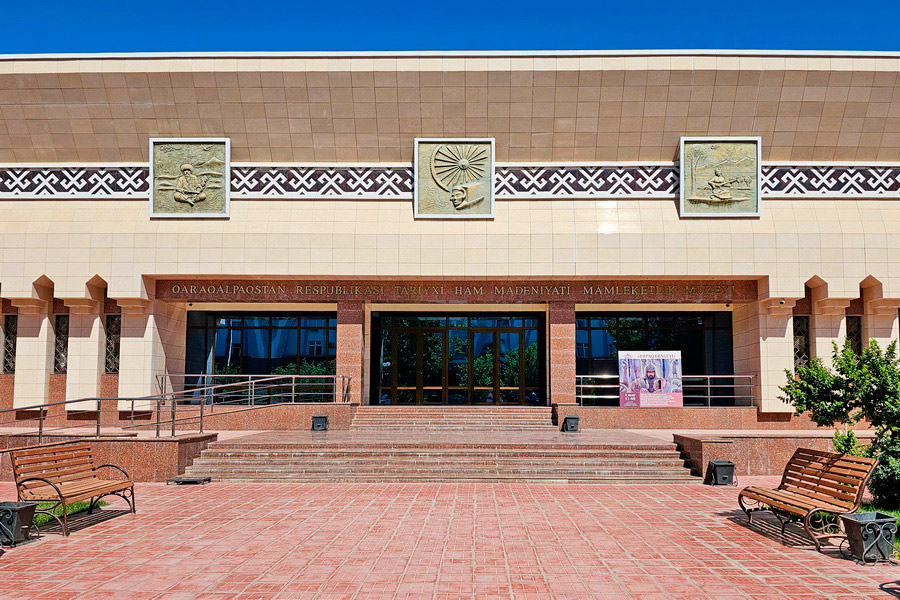
Owing to its Independence, our Government pays great attention to the history of our nation and its spiritual riches, and the activities of museums on the restoration, preservation, investigation, study and dissemination of national heritage on behalf of society are of particularly great importance.The Museum of Local Lore of Karakalpakstan is one of the oldest scientific and educational institutions, not only on the Lower Amu-Darya and Aral Sea, but also in all of Central Asia. Next year the museum will celebrate its 80th birthday.
As archival evidence testifies, in 1929 in Turtkul (the former capital of the Republic), the Museum of Local Lore was established, and on May 16th of the same year its first exhibition opened.
Today, the Museum is the most well known in the region. If 79 years ago the Museum had dozens of artifacts on display, now this number runs to more than 56 thousand. The yearly budget of the Museum has been replenished by new exhibits. Undoubtedly the main role it plays is in archeological expeditions to the regions of the Republic. Close contacts have been established with the Karakalpak filial of Uzbekistan's Academy of Sciences, Karakalpak University, and other schools and colleges. Together with these partners the museum has been carrying out work on the acquisition of articles of Applied Folk Art, and on the creation of new expositions dedicated to the life of modern Karakalpakstan.
And how many different arrangements have been held in the Museum! Some examples include: memorial meetings, jubilees, seminars, exhibitions, museum lessons, lectures and practical work with students of High Educational institutions. Every section of the Museum is rich and incomparable in its own way.
Children like the nature halls very much. Well decorated, these halls carry visitors away to a boundless valley; rise aloft together with birds to the sky. The dioramas "Usturt", "Kizilkum", "The Aral sea", "Waterfowls", and "Forests" stir great interest in the characteristic flora and fauna of the Republic.
And how interesting the archeological section is! Namely, from here the excursion to the history of the ancient land begins. At the sites of the Republic's archeological monuments, lay the remains of nearly 200 ancient cities. Models of ancient cities - Topirak-kala, Koykrilgan-kala, household articles, and labor implements indicate how long ago people lived there and how many centuries have passed since that time. Peculiar interest is aroused by the marble capital from the 5-4 centuries AD (found in the mountains of Sultanwizdag, Beruny region).
The exhibition of Applied Folk Art creates a dazzling impression. Here are expertly realized masterpieces of national skilled craftsmen. It is a vivid tree of trade, planted by the golden hands of embroideresses. These wonderful fantasies embodied in embroidery, weaving, articles of handicrafts and jewelry have no equal. Our eyes are drawn to the kok koylek, jegde, shaykalta, shinikap, shanash, kiymeshek and other embroidered articles. As for woven carpet articles - kergi, karshin, korjin; and yurt sets - ak baskur, kizil kur, janbaw, ayakbaw and many other types of items lead us into the depths of the centuries.
Extremely admirable is the tenderness of such jewelry articles as haykel, ongirmonshak, ayshik, tuyme, arebek, earrings, bracelets and rings, which were mounted with precious stones - cornelian, turquoise, and coral. The duwtar, kobiz, shinkobiz, sirnay, balaman and other musical instruments, invented in ancient times, still seem up-to-date and haven't lost their place in the performing arts.
The most cherished exhibit, indicating well being and ethnography of Karakalpaks, is the yurt. The Karakalpak yurt, with all its ornamentation and beauty, sharply differs from the dwellings of other nations. The section of the Museum devoted to the new history of the Republic displays all of the achievements gained during the years of Independence.
The Museum is a unique aesthetic and educational center, and has become a kind of Temple of History. We are attempting to preserve for future generations all the creations of their ancestors, keeping with great care every artifact. Without a past we will not have a future, so we, the Museum staff, are making sure that everybody finds their way to the Temple of History.
Museum working hours:
- Weekdays: from 9 a.m. to 5 p.m.;
- Saturday: from 10 a.m. to 4 p.m.;
- Sunday: Closed
Address: 2, Karakalpakstan Street, Nukus
Please call to arrange an excursion: (+998-61) 222-73-92, 222-73-89, 222-73-88


